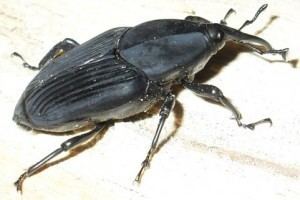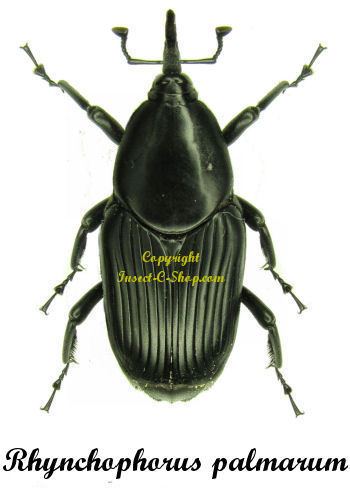Order Coleoptera Higher classification Rhynchophorus | Scientific name Rhynchophorus palmarum Rank Species | |
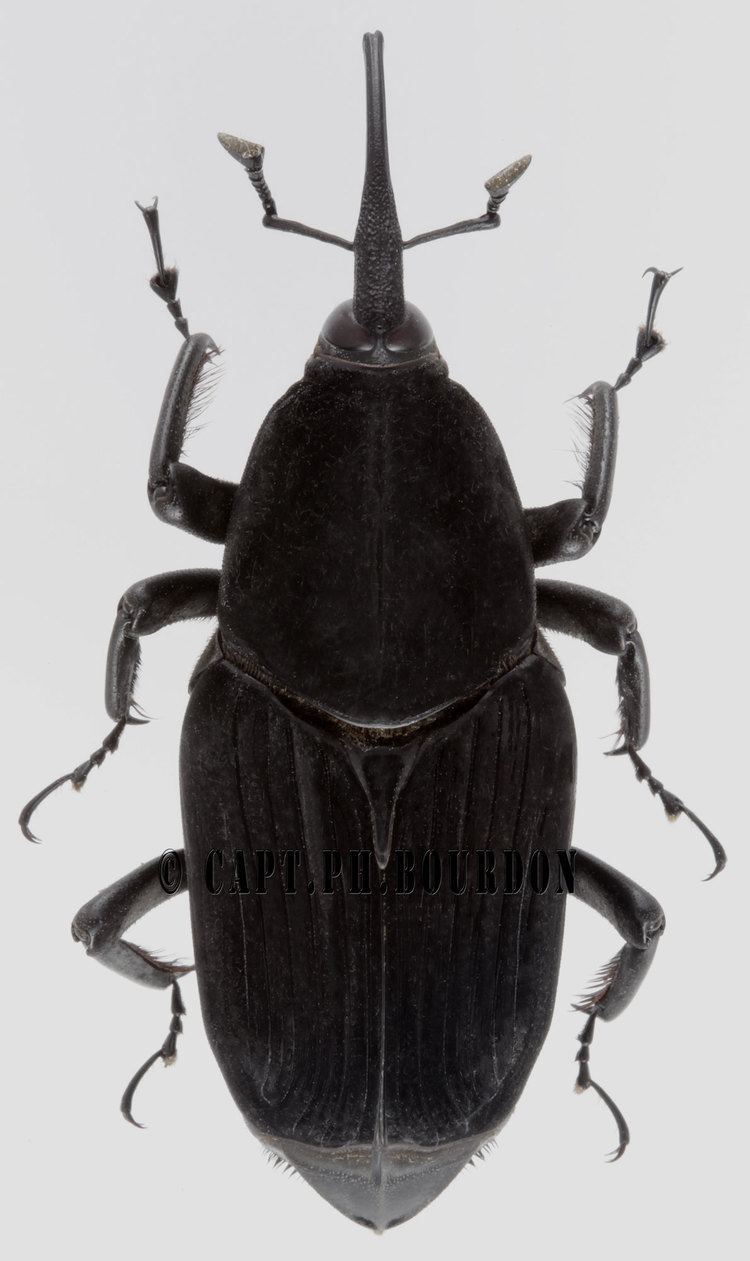 | ||
Similar Rhynchophorus, Insect, Beetle, Bursaphelenchus cocophilus, True weevils | ||
The South American palm weevil, Rhynchophorus palmarum, is a species of snout beetle. The adults are relatively large black beetles of approximately one and a half inch in length, and the larvae may grow to two inches in length.
Contents
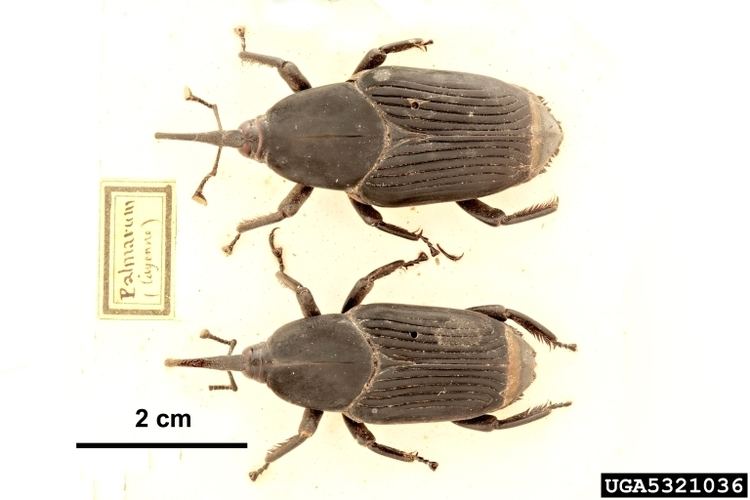
Biology & Behavior
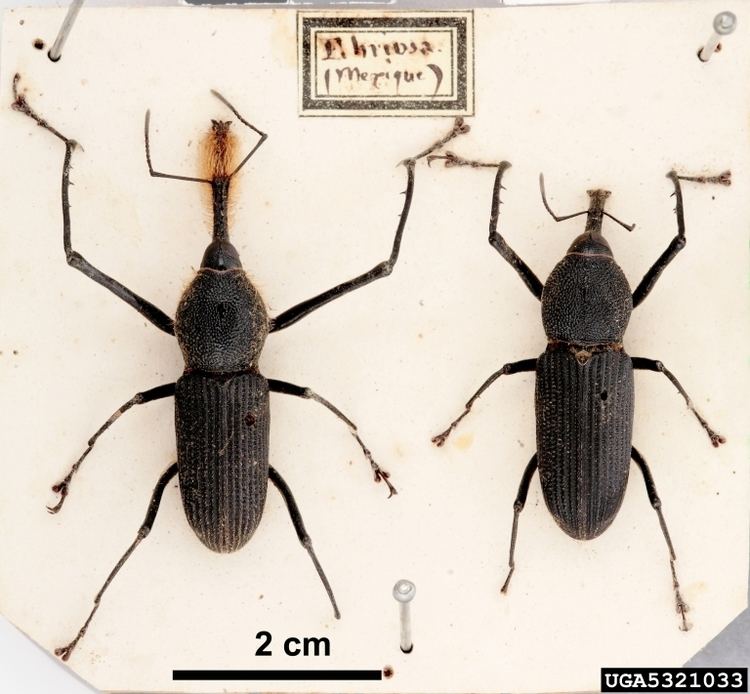
These insects are attracted to the release of volatile compounds produced by injured palm trees. The larvae burrow through the hearts of palms, and their feeding can potentially kill an infested palm or serve as an avenue for secondary infections of bacterial disease. It is considered an important pest of cultivated coconut, date and oil palms, attacking thirty-five different species in twelve different families. It has also been documented as an occasional pest of sugar cane. This insect serves as vector for the Bursaphelenchus cocophilus nematode, cause of Red Ring Nematode disease in coconuts. By the time one observes symptoms, the palm is usually already dead. Weevils are infected while feeding as adults or larvae, but only female weevils carry a large internal infestation around their oviducts and are capable of transmitting the nematode during oviposition. Females are capable of laying as many as 693 eggs. Eggs will hatch in three - five days, and spend seven to eight weeks as larvae, feeding on the heart of the palm. They will emerge from the heart of the palm to pupate in a cocoon woven from palm fibers either in the boot of palm-leaf petioles, or in leaf debris at the base of the palm. Pupation can take from one to three weeks. Adults will live from five to eight weeks.
Distribution

The weevil's native range extends across much of northern South and Central America. Recent finds in California and Texas suggest that the weevil may be expanding its range, and sightings in Tijuana, Mexico (July 2016) are of palmarum. As of 2017 it has now spread to San Diego County (San Ysidro, Bonita, and Spring Valley).

